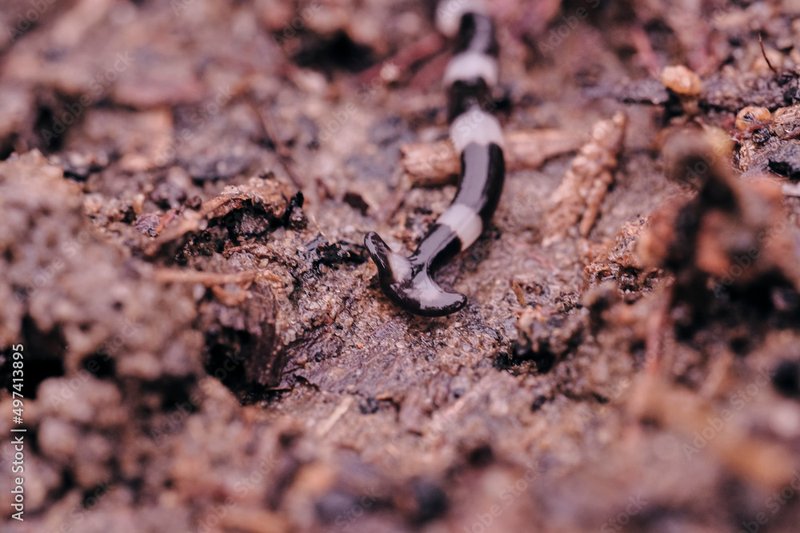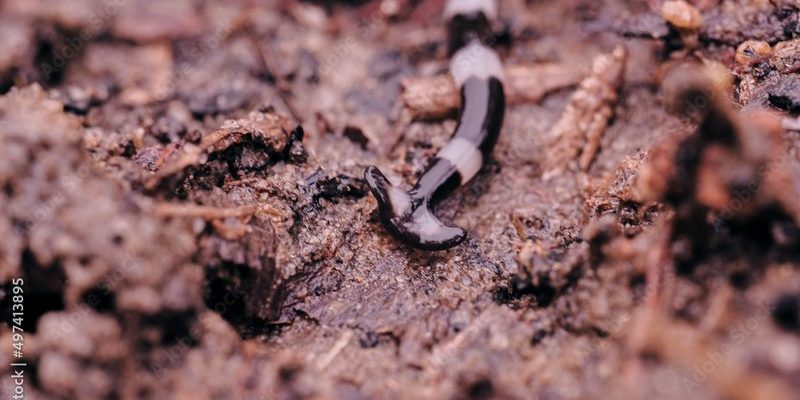
You might be wondering why you should care about an exotic worm. Well, these hammerhead worms aren’t just a quirky addition to the soil; they can pose risks to local ecosystems. They feed on beneficial earthworms and other soil organisms, disrupting the natural balance. And if you’re like most gardeners, you want to keep your plants healthy and thriving. Understanding how these worms spread through soil and mulch trades can help us prevent their invasion and protect our green spaces.
What Are Hammerhead Worms?
Hammerhead worms, scientifically known as *Bipalium kewense*, are part of a group called land planarians. These worms are native to tropical regions but have recently made their way to various parts of the world, thanks in part to global trade. Imagine a snake that’s been flattened out; that’s kind of what they look like. They can range in color from brown to a bluish tint, making them somewhat striking to see in the garden.
Why the name “hammerhead”? Well, it’s all about that unique shape at the front of their bodies. This shape allows them to sense their environment more effectively. They are also predatory, feeding primarily on earthworms, which are vital for healthy soil. If you spot one, it’s usually a sign that other soil organisms are in danger.
How Do Hammerhead Worms Spread?
Hammerhead worms are primarily spread through the movement of soil and mulch. When you buy these materials for your garden, you may unknowingly be introducing these pests into your space. Think of it like inviting the wrong guests to a party—cute at first, but they might be up to no good.
Here’s how it typically happens:
- Soil Sales: Companies that sell soil often package it from various locations. If they aren’t careful, they might include hammerhead worms.
- Mulch Trades: Mulch, especially organic kinds, can harbor hammerhead worms. Anytime mulch is transported, there’s a chance these worms could hitch a ride.
- Compost Piles: If you’re using compost that was made with infected soil or plant material, you might be unknowingly introducing these pests into your garden.
The Impact on Local Ecosystems
So, what happens when hammerhead worms invade? Well, they can cause significant shifts in the local ecosystem. These worms primarily feed on earthworms, which are crucial for soil health. Earthworms aerate the soil, enhance drainage, and enrich the soil with their castings. Removing these important players from the ecosystem can lead to poor soil quality, negatively impacting plant health.
Honestly, it’s like having a snowball effect. Fewer earthworms can mean compacted soil, less nutrient availability, and ultimately, plants that struggle to grow. If you’re a gardener or a farmer, this can lead to lower yields and more problems down the line.
Identifying Hammerhead Worms in Your Garden
If you’re worried hammerhead worms might be in your garden, it’s crucial to know what to look for. Here are some tips to help you identify them:
- Appearance: Look for long, flat bodies that can grow up to 9 inches long. Their heads are wide and flat, resembling a hammer shape.
- Movement: They move slowly, gliding across surfaces. They can also contract and expand their bodies when moving.
- Colors: They usually display shades of brown, with a lighter underside. Some may also exhibit darker stripes along their bodies.
If you find one, take a moment to observe it. This can be a fascinating moment in nature, but be cautious, as they can be harmful to the ecosystem.
Preventing Hammerhead Worm Spread
Now that you understand how hammerhead worms spread, you might be wondering how to prevent their arrival in your garden. Here are some helpful tips:
- Buy Local: When purchasing soil or mulch, try to buy from local suppliers who source their products nearby. This can minimize the chances of introducing foreign species.
- Inspect Your Supplies: Before using soil or mulch, check it for any signs of hammerhead worms. If you see one, refrain from using that batch.
- Community Awareness: Talk to your gardening community about hammerhead worms. The more awareness, the less likely they can spread unnoticed.
By taking these simple steps, you not only protect your garden but also contribute to preserving the local ecosystem.
Dealing with an Infestation
If you find hammerhead worms in your garden, it’s essential to act quickly. Here are some methods to handle an infestation:
- Hand Removal: Use gloves and carefully remove any visible worms. They can be placed in a sealed bag and thrown away.
- Soil Management: Regularly turning your soil can disrupt their habitats, making it less inviting for hammerhead worms.
- Natural Predators: Encouraging natural predators like birds can help control the hammerhead worm population. Consider adding birdhouses or birdbaths to attract them.
You might be thinking, “Isn’t this a bit much for a worm?” But let me explain: protecting your garden and the local environment is worth the effort.
Hammerhead worms may look like harmless garden guests, but they can significantly disrupt the delicate balance of our ecosystems. By understanding how they spread through soil and mulch, you can take proactive measures to keep them at bay. Whether it’s sourcing your garden supplies responsibly or adopting practices to deal with an infestation, every effort counts.
So, the next time you’re at your local garden center, think about what you’re bringing home. Protecting our gardens isn’t just about the plants; it’s about creating a thriving environment for all living things. With a little awareness and effort, you can ensure your garden flourishes without the unwelcome presence of hammerhead worms. 🌱

